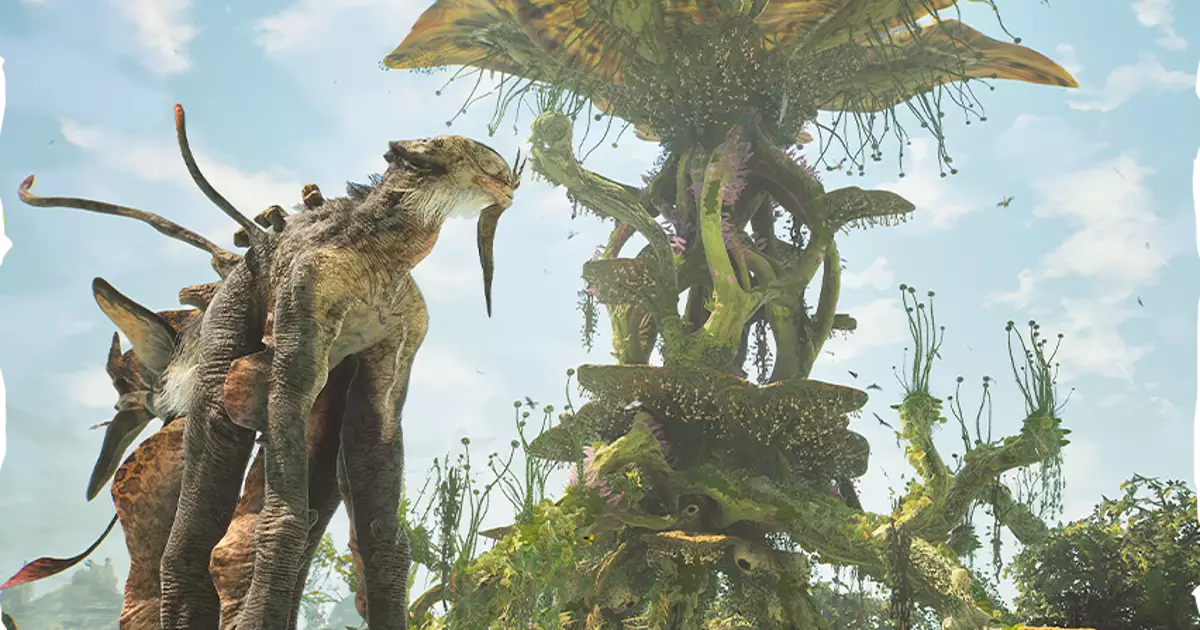The gaming landscape has become increasingly diverse, with developers striving to create immersive and expansive worlds that captivate players. “Towers of Aghasba,” an upcoming title from Development Team Dreamlit, aims to introduce gamers to a vibrant open world teeming with ecological themes and tribal elements. Set to launch on November 19, 2024, this game promises an engaging experience centered around exploration, village-building, and interactions with both nature and deific entities. However, beneath its colorful surface lies a myriad of complexities that merit deeper examination.
Gameplay Dynamics: A Delicate Balance of Creation and Destruction
Players step into the shoes of a junior architect from the Shimu tribe, tasked with revitalizing a world plagued by the Withered—ominous, undead tree-like entities. The core mechanics revolve around restoration and sustenance, allowing players to engage in village construction, foster wildlife, and even undertake combat against the menacing megasloths. This duality of nurturing and violence invites comparison with nature’s own cycle, although one must wonder if the execution leans more towards novelty than sincerity.
The existence of a crafting system presents a significant gameplay loop. Players can fashion weapons, armor, and elixirs, but there remains an underlying concern regarding the depth and organic integration of these elements. Is crafting truly a core feature, or will it merely function as a supporting mechanic in the wider context of gameplay? Real-time combat offers a blend of familiar action-centered dynamics; however, the risk lies in becoming a cliché within the already crowded survival game genre.
Another noteworthy aspect of “Towers of Aghasba” is its visual aesthetic. The game showcases an impressive array of flora and fauna, contributing to a lively ecosystem that will likely enchant players. The vibrant yet whimsical design of creatures like the “floofy pastel dragon” adds a unique touch, drawing players in and inviting them to engage with these beings rather than merely hunt them for resources. There’s an alluring quality to the abundance of life within the game’s world, reminiscent of the underwater exploration seen in titles like “Subnautica,” where players grow to understand complex ecosystems.
Despite these appealing designs, the influence of real-world indigenous cultures cannot be lightly addressed. Critics might argue that the game risks appropriating cultural elements without adequate representation or reflection. The risk of depicting tribal themes in overly cartoonish manners feels present, prompting the question: can developers strike a balance between homage and stereotypical portrayal?
Environment vs. Player Agency
The world of Aghasba beckons players with a clear eco-centric messaging; the player’s role is not merely to conquer but to coexist and restore. However, the choice to engage with the environment may feel ultimately shallow if the intricacies of this simulated ecosystem prove to lack depth. Does it offer a sense of real consequences for actions, akin to thriving or failing ecosystems? Or will the outcomes remain predictable and beholden to a particular gameplay structure?
Moreover, the introduction of holographic templates for construction poses questions of creativity. Players are told that they will be challenged and rewarded, yet conjuring intricate structures from holograms can feel both user-friendly and limiting. Will this reliance on technology overshadow the organic shaping of a world where intuition and creativity should thrive?
“Towers of Aghasba” appears to encapsulate a rich tapestry of gameplay elements and thematic undertones that may resonate well with a segment of gamers yearning for a blend of eco-consciousness and traditional survival mechanics. While its vibrant world and diverse animal interactions might captivate many, a critical perspective emphasizes the need for robustness in gameplay and respectful representation of the cultural themes it draws from.
As the release date approaches, “Towers of Aghasba” stands at a crossroads. Will it transcend the limitations sometimes inherent in survival games, or will it merely inhabit the genre with superficial eco-themes? Only time will tell, and the gaming community eagerly awaits an opportunity to dive into this ambitious project, hoping for layers of authenticity and engagement buried beneath the surface.

